2017 Featured Abstracts
Sophie S. Alves, University of Arizona
The Importance of Mentoring: Helping Underrepresented Students Navigate the Complexities of Higher Education
 |
||
While universities have had relative success in diversifying their campuses, it is necessary to further the research dedicated to identifying the specific needs of underrepresented students. Mentoring is a crucial component of student success. In the world of academia, one often hears such terms as “advisor,” “professor,” “educator,” “teacher,” “mentor,” “role model.” Students often use those terms interchangeably, not knowing the difference that exists between them and just assuming they are synonymous. However, they all have different meanings and entail different responsibilities. This research project aims at providing faculty members with more insight on the needs underrepresented students have compared to their more privileged counterparts. Even with the best intentions in mind, a negative and unconstructive comment from an authority figure can have detrimental consequences on underrepresented students. Indeed, faculty members, in comparison to students, often have a different understanding of what mentoring requires. Some think that the simple fact that they are an official advisor automatically means that they are mentors. However, the pre-requisites to be a mentor are different from those expected from an advisor. Someone can be a great advisor and yet be a terrible mentor, the same way that someone can be a great mentor without possessing the status of an advisor. What does it mean to “navigate the system?” How can statements such as “maybe, you are not strong enough for a Ph.D.” be considered good mentoring practices? Most importantly, how can underrepresented students be provided with the adequate support to ensure their academic success? It is thus vital to encourage and support mentoring relationships, but it is even more crucial to precisely define what being a mentor entails, especially when underrepresented students are concerned.
Alexis A. Bender, Emory University and Elisabeth O. Burgess, Georgia State University
Chaos and Continuity: Constructing Narratives of Recovery from Spinal Cord Injury
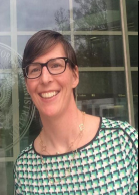 |
 |
|
| Bender | Burgess |
Sustaining a spinal cord injury (SCI) at any point in time can be life altering for everyone affected, but it places unique challenges on younger married or cohabitating couples. Most of the literature surrounding the illness or injury experience and transitions following illness employs the concepts of illness trajectories (Strauss et al. 1984) or biographical disruption (Bury 1982). Using thematic analysis and sensitizing concepts from the life course perspective, I analyzed qualitative interviews with 18 couples over the six-months following SCI. Field observations in the medical setting were also analyzed for context. Relying on past memories and anticipated futures, participants constructed five narratives of change that varied in direction, timing, intensity, and focus. The four narrative types were: 1) narratives of optimism, which emphasize hope and optimism and focus on how things will get better as time passes and recovery is realized; 2) hopeless narratives represent feelings of depression and hopelessness suggesting a negative change following SCI; 3) stability narratives, although rarely used, indicate little to no change following the event (e.g., I am the same now as I was before); and 4) ambiguous narratives, evoke an image of confusion and uncertainty about the future. As time passed, the pace and focus of participant narratives shifted from urgent and immediate to measured and distant. Understanding how social interactions in the health care setting influence individual and dyadic experiences of injury and recovery can inform interventions to support couples following SCI.
Hillary Lazar, University of Pittsburgh
 |
||
Neoliberalism, Precarity, and Equality for All: Framing the Movement to Unionize Academic Workers
In recent years there has been growing momentum for efforts to unionize graduate student employees, adjuncts, and other contingent faculty. This movement must be understood as part of a political project that extends beyond bread and butter issues and bargaining rights. It is not simply about fair treatment for a single body of workers within our particular industry. Rather, it is one component of much broader resistance to the precarious economic situation for millions of workers and their families in America and globally due to neoliberalism. Furthermore, unionizing academic workers is not only about securing economic justice, but is ultimately about building a more equitable and democratic world. While these big picture connections strengthen the case for university organizing, they may not always be obvious to potential supporters. Drawing on the concepts of “precarity” and “the Precariat” can help organizers within this movement to better explain how the union campaigns are tied into larger political work. Adopting an intersectional analytical lens is also critical for campaign organizers as it highlights how the movement is tied to other struggles. Framing our movement in these ways not only widens appeal, but also creates avenues for solidarity both across academic disciplines and mobilizations.
Hannah Liebreich, University of Hawai'i at Mānoa
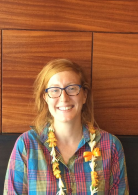 |
|||
Narrative as Methodology: An Examination of Campus Sexual Assault
In 2010 The United States Department of Education and the Office of Civil Rights (OCR) sent out the “Dear Colleague Letter” (DCL) urging universities across the country to streamline the implementation of Title IX policies. While the momentum following the DCL has led to large-scale quantitative studies, few studies rely on comprehensive, qualitative data to examine the everyday lived experiences of students impacted by sexual assault. This paper uses Jon Krakauer’s case study of the University of Montana (UM) to analyze the construction of campus sexual assault narratives. My analysis suggests that narratives humanize the survivor's experiences, even if those experiences do not fit with stereotypes regarding sexual assault (i.e. being violently attacked by a stranger). This in turn means that narratives aid in portraying survivors as “good,” more “believable,” and deserving of services. While Krakauer’s work is meaningful for understanding campus sexual assault, his work inadvertently draws on sexist tropes to reproduce notions of what it means to be a “good” and “bad” survivor. I rely on an intersectional analysis to tease out the ways in which the survivors who benefit from class privilege are more likely to be humanized by their narrative. Thus, constructing affluent women as more “believable,” and complicating the construction of sexual assault narratives.
Jennifer Singh, Georgia Institute of Technology
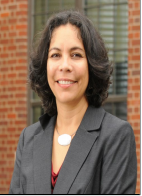 |
||
Narratives of Structural Inequalities: Alternative Caregiver Voices Navigating Autism Services
Intersectional forms of oppression are central to understanding autism disparities, however research to date has mainly focused on individual risk factors such as race, ethnicity or social class. These disparities exist at various domains of autism trajectories including age at diagnosis, access to therapeutic interventions, and representation in special educational services. Less known, however, is the complex milieus of social factors that operate together as told from the perspective of caregivers whose autism experiences are shaped in a structurally unequal society. Without this understanding, the goals of ending disparities evident in various domains of autism trajectories make it even more difficult to obtain. Drawing on the analytic framework of intersectionality developed by Black feminist scholars, the purpose of this paper is to offer a multi-level qualitative analysis based on in-depth interviews with Black women who are navigating autism services for their children within the constraints of state-based health insurance and limited resources. These narratives have been excluded in the representations of autism disparities thus far and offer important insight to the inextricable link between autism disparities and the structural, historical, and situational contexts of people’s lives as shaped by race, class, and gender.
Curt Yowell, University of Texas at Austin
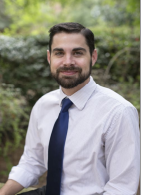 |
||
Government -Nonprofit Relations: The Case of the War on Poverty’s Community Action Program
The War on Poverty offers a case study to explore how and why particular government programs are conceived and structured to alleviate social ills. In addition, the research seeks to provide insight into the government-nonprofit relationship in America surrounding the issue of poverty. In attempts to utilize the War on Poverty as an informational guide to these topics, the research focuses on the Community Action Program (CAP), the complexities of implementing this program in coordination with local civic groups, and what lessons may be drawn out of this experience. The research reveals CAP succeeded most clearly in providing public disorder in local communities, helping to pull back the curtain on a social ill of the country. Further, nonprofit Community Action Agencies founded primarily through CAP provided an opportunity for communities to organize once the public’s attention was focused on social inequalities, and in some cases this scenario set a foundation for the political organization of poor communities previously marginalized.
Jessica S. Welburn, University of Iowa
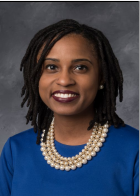 |
||
Public Sector Contraction and the Experiences of Middle-Income African Americans: The Case of the Detroit Public School System
Drawing upon 70 interviews with long-term residents of Detroit, this paper explores how middle-income working class and middle class African Americans navigate the city’s failing public school system and the rise of charter schools. I find that respondents with children experience a number of problems with Detroit Public Schools including high teacher turnover and building infrastructure issues. I also find that for many respondents, the growing number of charter schools available in the city is not a panacea for the city’s failing public schools. Perceived problems with charter schools include high teacher turnover rates, unfamiliar teaching methods and inconsistent standards of evaluation. Thus, respondents must shoulder the burden of declining public investment in local schools, and few have developed what they perceive as adequate solutions to the challenges that they face. I argue that the case of Detroit’s public school system reveals more generally how public sector contraction in urban areas can impact not only economically disadvantaged African Americans, but also middle-income African Americans. Findings are important for our understanding of post-Civil Rights Era progress for members of this group.
